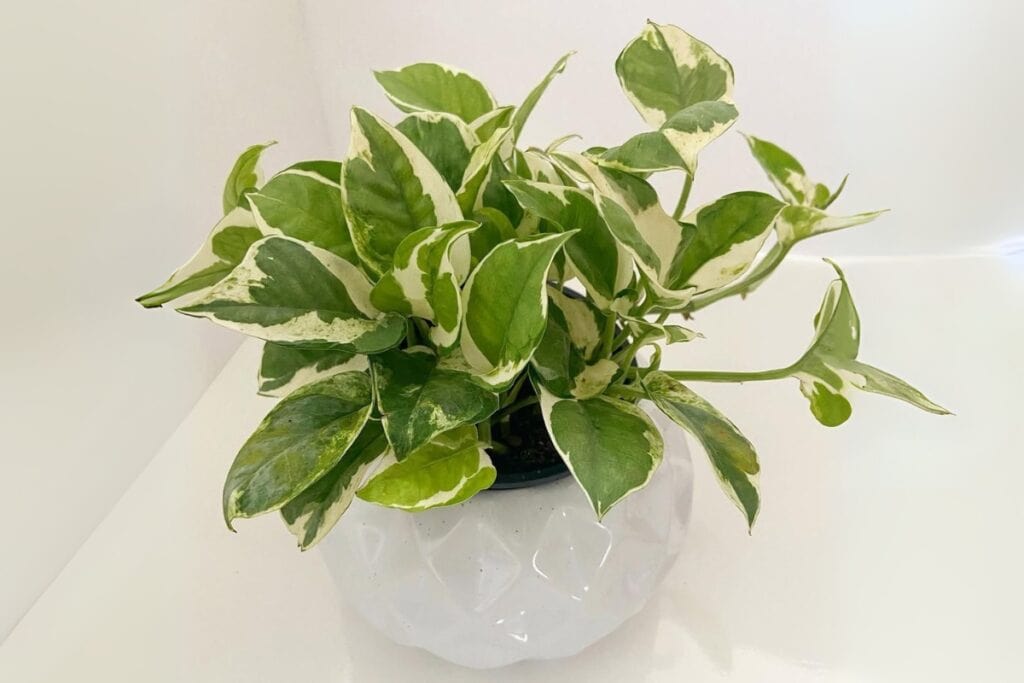You’ve probably seen countless Golden Pothos trailing from shelves, but Pearls and Jade represents something entirely different. This isn’t your grandmother’s houseplant—it’s a sophisticated cultivar that demands respect, precision, and patience. While most people treat pothos like indestructible green machines, this variegated beauty will quickly humble anyone who assumes all pothos are created equal. The difference between thriving specimens and struggling survivors comes down to understanding one critical factor that most plant parents completely overlook.

Contents
The Scientific Story Behind This Unique Cultivar
While most houseplant enthusiasts admire the Pearls and Jade pothos for its stunning variegation, few realize this cultivar didn’t exist in nature. Scientists at the University of Florida created this beauty through induced mutations from the Marble Queen cultivar in their labs. They patented it in 2008, releasing it commercially in 2009.
This scientific breakthrough enhanced genetic diversity within the pothos family, giving you access to unique variegation patterns that wouldn’t occur naturally. The researchers specifically targeted leaf coloration genes, resulting in the distinctive white and cream stripes you see today across those compact, ruffled leaves.
Light Requirements and Optimal Placement Strategies

Where should you position your Pearls and Jade pothos to showcase its stunning variegation? Bright indirect light is essential because these leaves contain less chlorophyll than standard pothos varieties.
Window positioning matters greatly for ideal growth. East, south, or west-facing windows provide perfect light intensity without causing leaf burn. Keep your plant several feet away from the glass to prevent direct sun exposure.
If natural light isn’t sufficient, supplement with grow lights. Poor lighting will cause the beautiful white and cream patterns to fade, leaving you with mostly green foliage instead of the striking variegated appearance you’re after.
Watering Techniques and Soil Composition Essentials
Since your Pearls and Jade pothos can’t tolerate soggy roots, you’ll need to master the balance between consistent moisture and proper drainage. Check the top inch of soil before watering—it should be completely dry. Your watering frequency depends on temperature, humidity, and season, typically every 7-10 days.
Standard potting soil won’t cut it here. You need well-draining, loose soil that includes proper soil amendments like perlite, vermiculite, and coconut coir. Mix two parts potting soil, one part perlite, and one part coconut coir for ideal drainage while retaining necessary moisture for healthy growth.
Temperature Control and Humidity Management
Beyond soil and water requirements, your Pearls and Jade pothos demands specific environmental conditions to flourish indoors. Temperature fluctuations can stress this tropical beauty, so maintain consistent warmth between 65-80°F. The sweet spot for ideal growth sits around 75-80°F, where your plant will reward you with healthy development.
Never let temperatures drop below 60°F, as cold damage occurs quickly. Keep your pothos away from drafty windows, air vents, and exterior doors where sudden temperature changes happen.
Humidity levels around 60% create the perfect atmosphere, though anything below 40% may cause leaf damage and stunted growth.
Feeding Schedule and Pruning Best Practices
While your Pearls and Jade pothos doesn’t demand heavy feeding, a consistent fertilization schedule keeps those variegated leaves vibrant and healthy. Apply balanced liquid fertilizer once monthly during spring and summer, then stop completely in fall and winter. Different fertilizer types work well, but stick with diluted houseplant formulas to prevent root burn.
Regular pruning techniques help maintain compact growth and prevent leggy vines. Cut just above leaf nodes using clean scissors, removing damaged or overgrown sections anytime you spot problems. Save healthy cuttings for propagation, but discard any diseased material immediately.
Troubleshooting Common Issues and Long-Term Care
Even experienced plant parents encounter challenges with their Pearls and Jade pothos, but most issues stem from just a few common causes. Yellow leaves typically signal watering problems or nutrient deficiency, while brown patches indicate moisture stress or direct sun exposure.
For effective pest management, check weekly for spider mites and aphids, especially during dry conditions. Wipe leaves monthly with damp cloth for proper leaf care and early pest detection.
Long-term success requires repotting every 2-3 years and monitoring growth patterns. With consistent care, your plant can thrive indoors for up to a decade.
